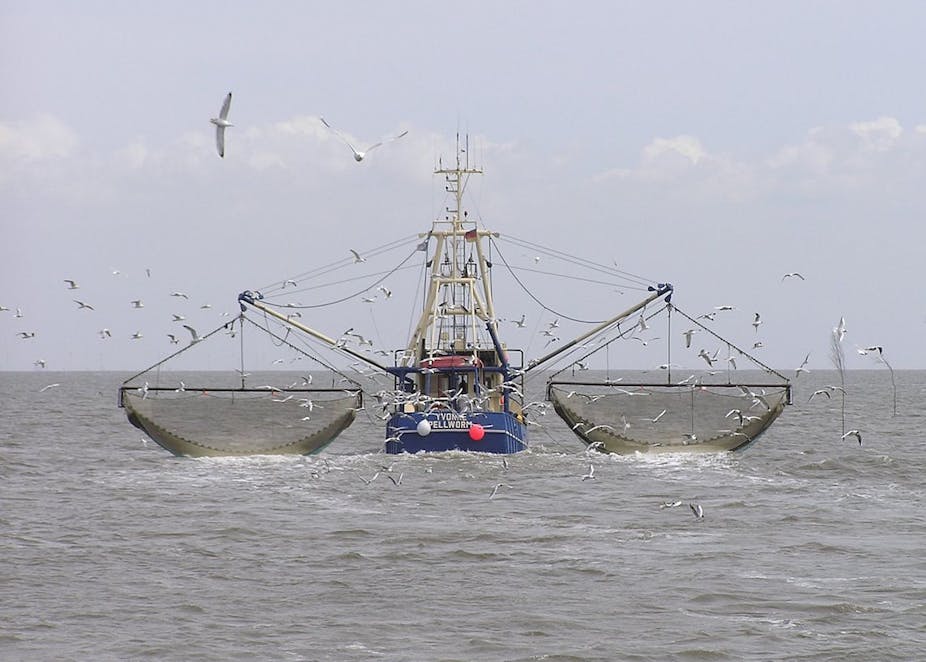When the UK Environmental Audit Committee investigated the issue of protecting our marine environment last month, it concluded that there had been a woeful lack of decisive action from the government so far.
The committee, led by the MP for Stoke-on-Trent, Joan Walley, questioned the government’s commitment to introducing Marine Conservation Zones after less than a quarter of the 127 sites recommended by independent project groups were designated as conservation areas. And even in those that were established, there are serious concerns remaining over the adequacy of the enforcement provisions put in place. None of them, for example, ban the use of damaging fishing gear such as trawls and dredges, equipment that causes long-term damage to the sea bed and obliterates fish spawning areas.
And as an example of why that’s such an important omission, the paper we’ve published, a scientific study of commercial fishing catches in the English Channel over the past 90 years, reveals the true impact that industrial fishing has had upon marine life.

Fish landings from the Channel grew from 9,146 tonnes in 1920 to 50,924 tonnes in 1970, peaking at 177,793 tonnes in 1983 and stabilising around 130,000-150,000 tonnes over the last decade. In that time the amount of cod, haddock and hake dropped from 48% to just 4% of the catch. Sharks and rays fell from 34% of catch in 1920 to 6% in 2010.
There’s been a huge decline in what is called white fish, those species that live near the sea bed such as cod, ling, hake and haddock which are prized for their delicious flakes of white flesh. Fish such as halibut that can grow as big as a man, and the common skate have disappeared completely off the southern coast of England and northern France.
When we examine the footprint of mobile fishing gear, like beam trawlers and scallop dredgers, the reason is screamingly obvious – Britain’s sea bed is repeatedly gouged by tonnes of heavy fishing gear. It’s no wonder that the only fish left are tiddlers. Our supermarkets stock cod and haddock freighted in from Iceland and Norway, where fishing with trawls and dredges is banned in coastal waters because of the damage it does to the fishes’ spawning areas. Most of the salmon, bass and bream we eat come from from fish farms, because we simply cannot catch enough of those species in UK waters to meet consumer demand.

The ecological balance of the seas around us has changed dramatically. Intense fishing of the English Channel by fleets from all over Europe has wiped out stocks of larger fish, allowing commercially undesirable species – the cockroaches, rats and mice of the sea – to thrive. Perversely, business is booming for the scallop-dredging fleet since scallops have tough shells and thrive in heavily trawled areas. But most of this catch is destined for the export market – it seems crazy to export what we catch and import what we eat.
A common misconception, one that is perpetuated by fisheries ministers throughout the European Union, is that there are too many fishermen catching too few fish. The problem is quite the opposite: there are too few fishermen catching too many fish. Large vessels manned by a skeleton crew trawl up vast quantities of sea life, burning fuel that is subsidised by the tax payer.
I want to see harbours bustling with small fishing vessels catching delicious food in a sustainable manner. The only way to achieve that is to prevent widespread damaging activities. We know from our own research in south-west England that marine life soon recovers once the use of mobile gear is stopped in inshore waters. If you dive in shallow waters off the Azores or Norway, where the seabed is left alone, the seabed is teeming with life, with small fish that grow up to become the fish that feed the offshore fishing industry and, ultimately, feed us.
As Walley concluded: “When a rare species or biodiverse stretch of sea bed is destroyed it may be lost forever. The government must therefore act on the best available evidence and base its decisions on new marine conservation zones on the precautionary principle, rather than demanding unobtainable evidence.”
The scientific evidence is in. Now is the time for the government to act. Setting aside areas where marine life can recover makes sense and is the right thing to do.

